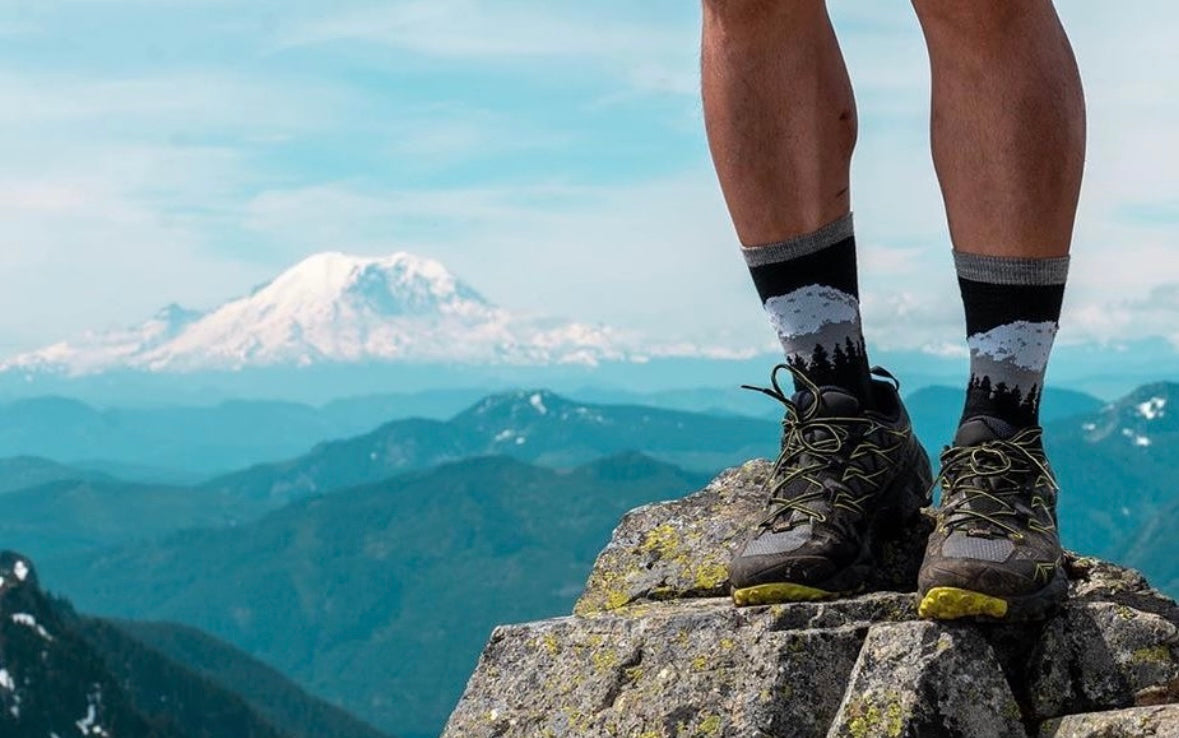While winter hiking in Washington State can be a beautiful and serene experience, it comes with its own set of challenges and rewards. With proper preparation and the right gear, you can enjoy the snowy landscapes and tranquility of the Pacific Northwest during the colder months.
Challenges of Winter Hiking:
-
Cold Temperatures: Washington's winter can be quite chilly, especially in higher elevations. It's essential to dress warmly in insulated layers to stay comfortable and avoid frostbite.
-
Snow and Ice: Snow and ice can make trails slippery and challenging to navigate. Microspikes or crampons can provide extra traction and make your hike safer.
-
Shorter Days: Winter days are shorter, which means you have fewer daylight hours to complete your hike. Start early, plan your route carefully, and bring a headlamp in case your hike takes longer than expected.
-
Weather Changes: Weather can change rapidly in winter. Check the forecast before heading out and be prepared for changing conditions. A sudden snowstorm or heavy rain can affect your hike.
Rewards of Winter Hiking:
-
Peace and Solitude: Winter hiking often means fewer fellow hikers on the trail. You can enjoy the serenity of the snow-covered landscapes in near solitude.
-
Stunning Scenery: Snow blankets the landscape, turning familiar trails into a winter wonderland. The sight of snow-covered trees and frozen lakes is a magical experience.
-
Wildlife Viewing: With fewer hikers on the trails, wildlife is more active and visible. Keep your eyes peeled for tracks in the snow and the chance to see animals like deer, elk, and birds.
-
Unique Challenges: Winter hiking presents unique challenges that can be rewarding in their own right. Navigating snowy and icy terrain, practicing cold-weather survival skills, and learning to use snowshoes or cross-country skis are all valuable experiences.
Safety Tips for Winter Hiking:
-
Check the Forecast: Keep an eye on the weather forecast and be prepared for changing conditions. Avoid hiking in severe weather, and have a backup plan in case of unexpected storms.
-
Layer Properly: Dress in layers to stay warm and dry. Merino wool base layers are excellent for wicking moisture away from your skin.
-
Carry Essential Gear: In addition to the Ten Essentials (navigation tools, sun protection, insulation, illumination, first-aid supplies, fire-starting tools, repair kits, nutrition, hydration, and emergency shelter), bring specific winter gear like microspikes, snowshoes, or cross-country skis.
-
Travel with a Buddy: Winter hiking can be riskier than hiking in warmer seasons. Hiking with a companion is safer, as you can help each other in case of emergencies.
-
Stay on Marked Trails: In winter, off-trail hiking can be more dangerous due to hidden hazards under the snow. Stick to marked trails to minimize risks.
-
Keep Hydrated and Energized: Winter hiking can be deceptively dehydrating. Drink plenty of water and eat high-energy snacks to maintain your stamina.
Winter hiking in Washington offers a unique opportunity to experience the state's beauty in a different light. With proper precautions and a spirit of adventure, you can enjoy the rewards of hiking in the snow-covered wonderland of the Pacific Northwest.

